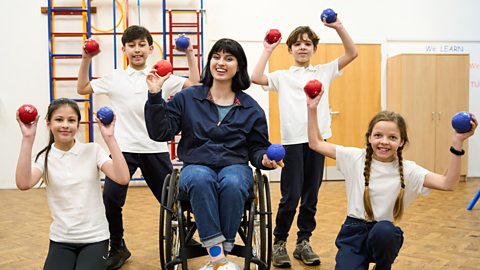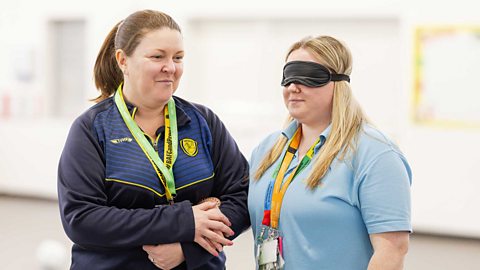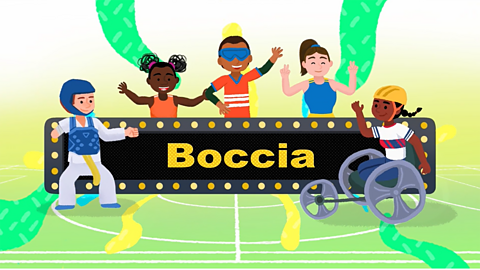From para archery and wheelchair racing, to the revolutionary game of boccia, breathtaking displays of skill and athleticism are facilitated everyday using a variety of groundbreaking equipment that has been engineered to enable peak performance.
We've gathered eight incredible inventions below to showcase just some of the innovative designs that take accessible and inclusive sports to the next level.
1. Radio aids
Using the power of technology, radio aids can be worn during sports games or other team activities to help the wearer hear and follow instructions. Football is a great example of a sport were radio aids are incredibly useful - a radio aid helps to decrease the negative impact of background noise that a player faces during a match. Even better, they are able to hear their coach more clearly above all the racket.
Whatãs more - radio aids work on multiple frequencies, allowing players on opposing teams to use radio aids simultaneously! This can be incredibly helpful for players who are hard of hearing, D/deaf, neurodivergent or have an auditory processing disorder.
The device is made up of two parts - the transmitter (which contains a microphone and emits a radio signal) and the receiver (which receives the radio signal and transforms it into sound). A coach can wear the transmitter around their neck, and direct their instructions to the entire team with ease. The receiver can also be affixed to a hearing aid for amplification, or function solo, depending on the playerãs needs.
Radio aids are such an impactful addition to the world of inclusive sport and can decrease anxiety and injuries for all kinds of players on the sports field.
2. Handcycle
Imagine a bicycle you can pedal with your hands - the handcycle! This amazing achievement of accessible design allows wheelchair users to become cyclists, whether on a casual or a competitive level. But even better - handcycles come in many different varieties, and allow for limitless customisation to accommodate different disabilities.
Some handcycles clip onto the front of the cyclistãs wheelchair, while others have their own tricycle structure to aid balance. Competitive racing handcyclists may also opt for a recumbent model, streamlining their posture for speed. Cyclists with the use of only one upper limb can also cycle and steer with a modified pedal or wheel at the helm.
Cycling is a great way to get outside and get your body moving. Thanks to handcycles, even more people will be able to take part in this classic sport!
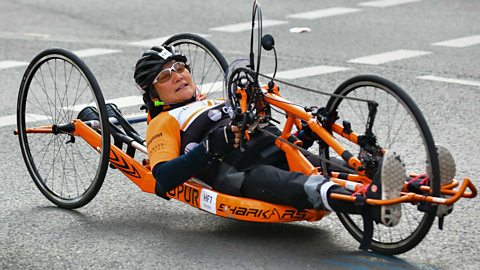
3. Sports prosthetics
When a person is born without, or loses an arm or a leg, they may choose to replace it with a 'prosthetic' device that is attached to where the limb used to be. The prosthetic helps the wearer complete tasks that require the missing limb - for example a prosthetic leg would help the wearer to walk and run.
Prosthetics are far from a modern invention! Humans have been using prosthetics for around 5000 years, with records of Ancient Egyptians using prosthetic eyes and toes.
However, today some athletes who wear a prosthetic can have their new body part specially designed to help them excel in their sport (such as blades for running or jumping), rather than accurately resemble the body part theyãre replacing. These specialised limbs are designed for flexibility, durability, and maximum efficiency in sports like athletics, horse riding, snowboarding, rock climbing and more! Even better, use of these prosthetic limbs can allow disabled athletes to compete at the highest levels - their prosthetic could ease fatigue and improve agility, allowing them to potentially go longer and faster than a non-disabled athlete.
Finally, some might say, the unlimited options for personalisation is the coolest part of wearing a prosthetic. Your prosthetic can be any colour under the sun! They can be patterned with stripes, polka dots, stars, flowers, or even the logo of your favourite footie team.
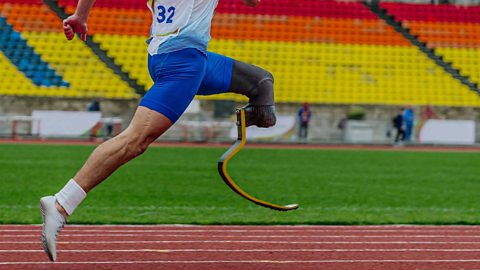
4. Motorised fishing reel
Ever tried fishing with one hand? Thanks to this invention, itãs easier than ever: the motorised fishing reel! Disabled anglers with a motorised fishing reel can pull in their catch swiftly, just by pressing a button. This device is especially helpful for those who only have the use of one hand, or struggle with their grip.
Like other reels, this device is attached to the fishing rod, but allows anglers to simply cast and retract their line using a button, rather than manually controlling their spool release. This motorised device has been popular among many different people with disabilities, such as those who are recovering from a stroke, to those born with a limb difference.
Fishing isn't a Paralympic sport but it is a great way to get outdoors and into nature as a disabled person. Some use this time for socialisation and fun, while others go fishing to practise mindfulness and solitude. This sport not only reduces stress, but promotes physical and mental wellbeing as well - even if you donãt catch a thing!
5. Infrared aiming
Ever heard of Para sport shooting? According to the Paralympics Committee: ãShooting is the ultimate test of accuracy and control.ã This fascinating sport was first premiered at the Paralympic Games in 1976, and today more than 75 countries compete for the gold medal.
But you may wonder what safety measures are in place for this potentially dangerous sport? What adaptions have been put in place for blind or partially sighted shooters?
The next fascinating accessibility design achievement on our list is the infrared aiming device! The clever little machine is attached to the dovetail of the gun and guides the competitors to aim and shoot using high pitched beeping sounds. Using infrared signalling, the beeps get more and more high pitched the closer the shooterãs aim is to the target.
Although perhaps shooting is not an activity that everyone would consider an accessible sport, thereãs a clear precedent for sports like these at the Paralympics. Like boccia, the name of the game is precision and accuracy. These sharpshooters use their brains (and their ears!) to compete on an international level. Whatãs more sporty than that?
6. Para ice hockey sledge
In the 1960s, a group of men in a Swedish hospital refused to give up their beloved ice hockey following their injuries. Using a sledge and a pair of ice skates, they were able to fashion the first Para ice hockey sledge! This double-bladed sledge allowed the puck to pass underneath the players as they played sat on top.
This took the country by storm! By the end of the decade five Para ice hockey teams were based in Stockholm, with teams made up of both disabled and non-disabled players. Through the next thirty years, more and more countries created their own Para ice hockey teams. In 1994 the sport was officially added to the Paralympic games in Lillehammer. Today, the sledges still resemble the very first prototype, modelled after a childrenãs sledge.
Looking back, the original athletes who created this sport probably would have had no idea that their makeshift sledge would have such an impact for accessible sports - from a frozen lake in Southern Sweden to teams taking up the sport across the globe in Tokyo 2020 - they literally changed the world!
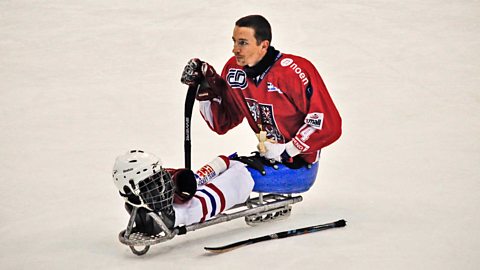
7. Boccia ramps and pushers
Introduced in 1984, boccia (pronounced ãbot-chaã) is the fastest growing disability sport in the world and there is no Olympic counterpart. It is an indoor game of two sides similar to bowls and is played sitting down. The aim of the game is to get your ball closest to the jack as possible, which requires both tactics and physical accuracy.
With the development of a variety of gadgets, it is also one of the most inclusive sports and can be played by people who have high support needs and impaired functional ability in all four limbs. With the aid of pushers, a plastic head on a long handle, people with limited hand movement or people who find it hard to bend down, can still take part in the sport. Ramps are also a great device for people who might struggle to throw or kick a ball as it enables them to propel the ball onto the court and there are head, mouth or arm pointers which can be used to release the ball onto the ramp.
Thanks to accessible design and its inclusivity, boccia is now played in more than 50 countries in the world!

8. Adaptable surfboard
Believe it or not, surfing is one of the most accessible sports there is! Using an adaptable surfboard allows people with any number of disabilities to catch the waves. There are countless combinations of adaptations that can be attached to a board including (but not limited to) grips, handles, fenders, chest risers, elbow cups and even seats! Thatãs right, even without the use of your legs you can surf too!
There are many notable disabled surfers, like Bethany Hamilton. Bethany lost her left arm when a tiger shark attacked her while she was surfing with a friend off the coast of Kauaò£i, Hawaii. She was determined to return to the sea and learn to surf again, so she had a new board custom made which included a handle to make it easier to steer!
Surfing isn't yet in the Paralympics, but with the 2028 Paralympics being held in the popular surfing city of L.A, could this change? Whether youãre just learning to ãshredã, or youãre a professional, why not try out an adaptable board to meet your needs? Grips and handles provide stability while fenders offer protection and balance in the water. Feel the motion of the ocean, dude!

